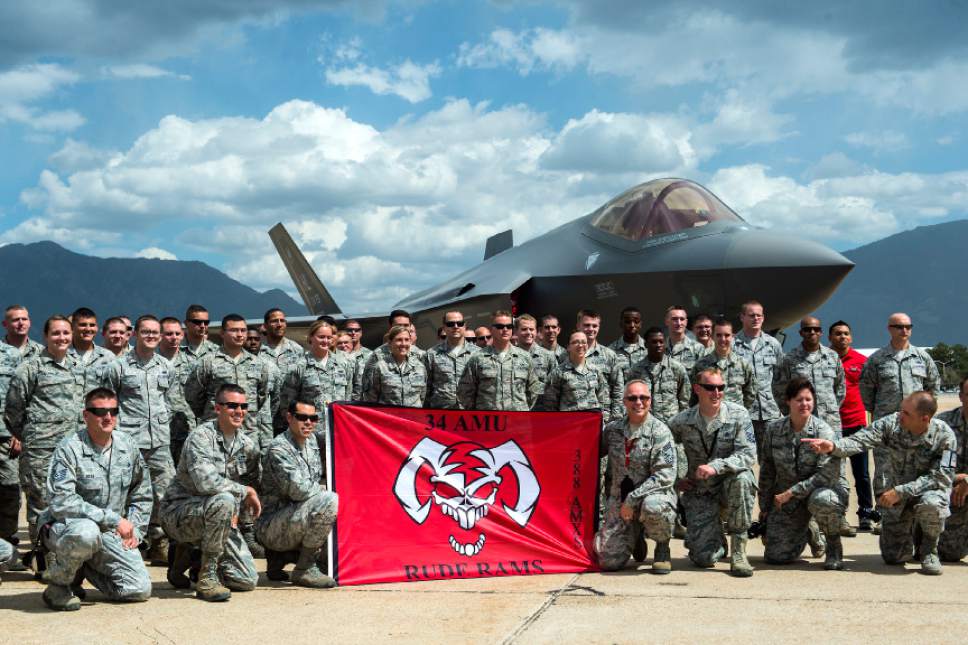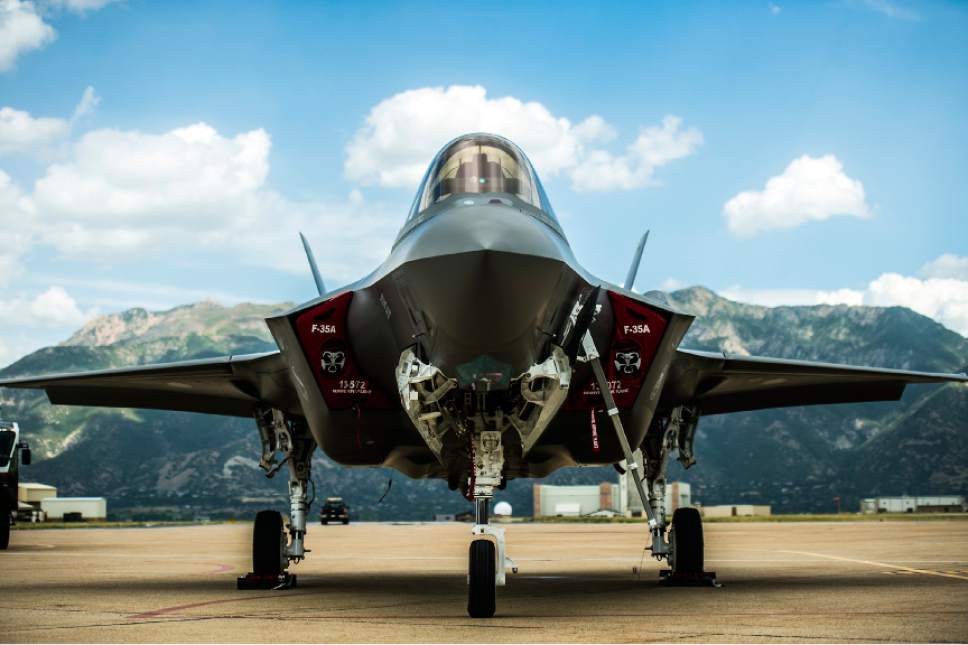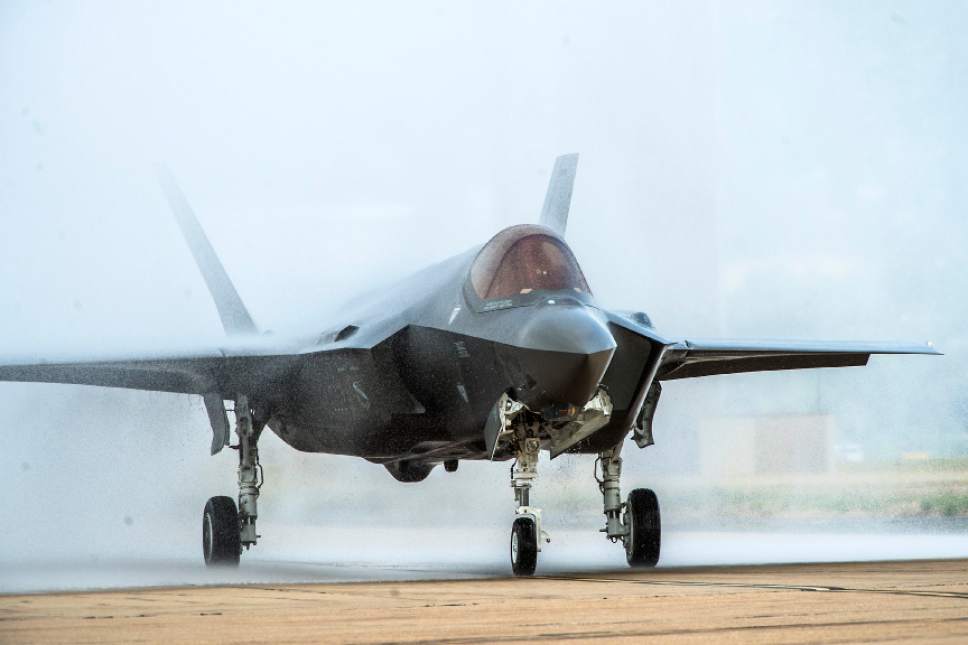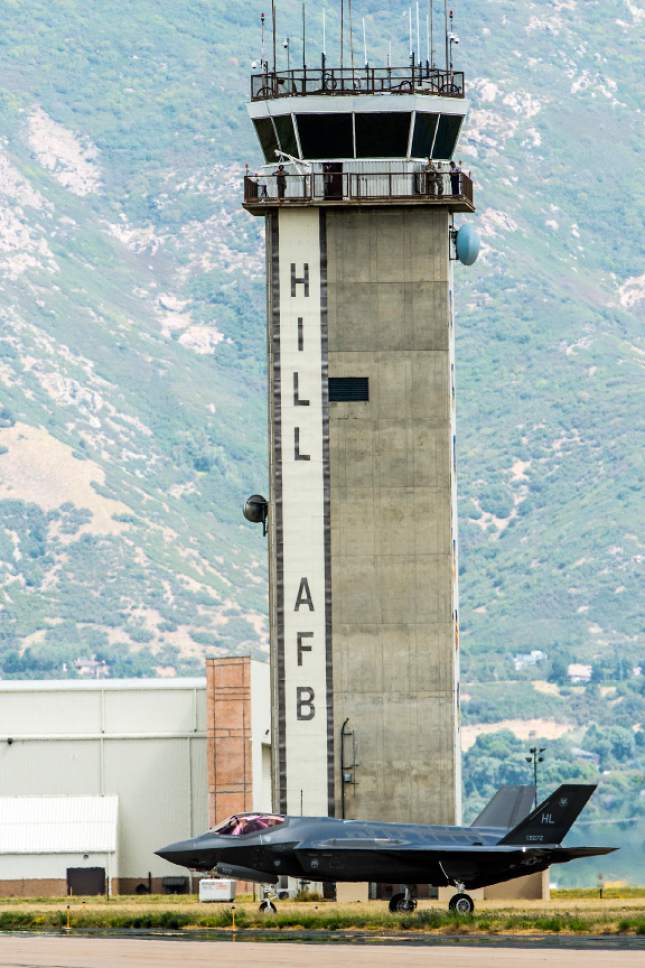This is an archived article that was published on sltrib.com in 2016, and information in the article may be outdated. It is provided only for personal research purposes and may not be reprinted.
The United States' newest fighter jet, and pilots and maintainers from Utah, are almost capable of deploying to a war zone, officers from Hill Air Force Base said Wednesday.
In a conference call with reporters, the commanders said the F-35 and the personnel performed well in recent mock deployments and training flights and have achieved milestones set by the Air Force.
"Every pilot here has dropped a weapon from the jet," said Lt. Col. George Watkins, commander of the 34th Fighter Squadron commander. "Most of them inert. A couple of them live."
The success doesn't mean the F-35s are going into to combat anytime soon. The Air Force and observers have predicted the F-35 won't actually be deployed until sometime between 2019 to 2022.
The first operational F-35s will be at Hill, but it still only has less than one squadron's worth. The base is to eventually receive 72 of the jets — enough for three squadrons.
Watkins, though, said the 34th will fly to combat sooner if the Air Force tells it to.
"The squadron will be prepared to go to anyplace they tell us to go," he said.
The Air Force had set Aug. 1 as a date for what it calls "Initial Operational Capability," though at least one organization, the Project On Government Oversight, declared months ago that such an announcement would be only a public relations move.
The Project, which has been a fierce critic of the aircraft for its cost and delays, has pointed to reports from the Pentagon saying the F-35 still has problems with its software and with fuel storage.
But the Hill commanders on Wednesday contended the problems have been addressed and the plane is performing well.
Lt. Col. Steven Anderson, deputy commander of the 388th Maintenance Group, said the F-35s fuel system was recently modified so nitrogen makes air within the fuel tanks inert. That will limit the F-35s vulnerability to lightning and allow the aircraft to fly with more g-force, he said.
Watkins said the software and avionics on the F-35 allowed pilots to train successfully. He pointed to the 34th's mock deployment in June to Mountain Home Air Force Base in southwest Idaho.
Adversaries there were unable to detect the F-35, which has stealth capabilities, Watkins said. The only time adversaries did find the aircraft was when the radar trackers were told the F-35s' locations so their pilots could practice against being detected.
Even then, Watkins said, the adversaries' simulated shots at the F-35 had a "low probability" of hitting the target.
"That's a pretty awesome feeling when you go out into combat and you know it's an unfair fight," Watkins said.
Anderson closed the conference call by proclaiming it to be a good time to serve at Hill Air Force Base. He said the personnel there have a once-in-a-lifetime opportunity to bring a new weapons system online.
"Even the youngest people in this program feel like they are making contributions that are going to last with this airplane," Anderson said.
Twitter: @natecarlisle











